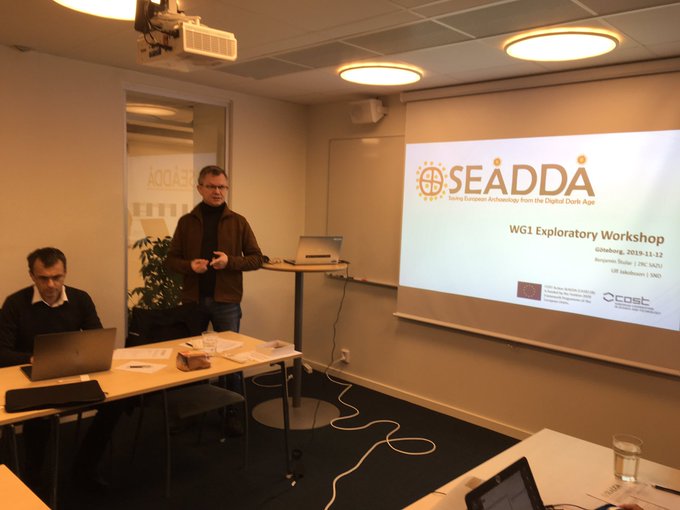
On 12 November, SND could welcome members from SEADDA (Saving European Archaeology from the Digital Dark Age) to a one-day workshop in the Gothenburg office. The workshop centred on discussions on the situation for archaeological data, and on outlining the survey of the international state-of-the-art that the group has been tasked with.
SEADDA is an EU-funded initiative for preserving archaeological data in the digital age. Their work is conducted by four working groups with different objectives; such as identifying technical solutions for data archiving, coordinating best practices for preserving and disseminating data, and investigating how to optimise the possibilities for data re-use. The workshop in Gothenburg saw members from Working Group 1, which has been tasked with surveying the state-of-the-art for archaeological data, disseminating knowledge, and network-building in the archaeological field.
Key speakers were Professor Julian Richards from ADS (Archaeology Data Service) and Professor Francis McManamon from Arizona State University (executive director of the Center for Digital Antiquity and tDAR), who related their respective experiences from starting a digital repository for archaeological data. They were followed by short presentations by each participant, who shared experiences from their countries.

—We discussed and compared the legal and practical circumstances for managing archaeological data in our countries. Who is responsible for preserving data, if anyone? Who should be responsible? Who pays for it? How do we encourage people to actually deposit their data, and to make them accessible? These types of questions will make up a survey questionnaire from the working group. The purpose of this survey will be to collect information to advise those who wish to create a repository for archaeological data. What progress has been made over time, and how can we help those who haven’t come as far? says Ulf Jakobsson from SND, one of the working group’s chairs.
SEADDA COST Action runs from 2019 to 2022. You can read more about and follow the project here.
